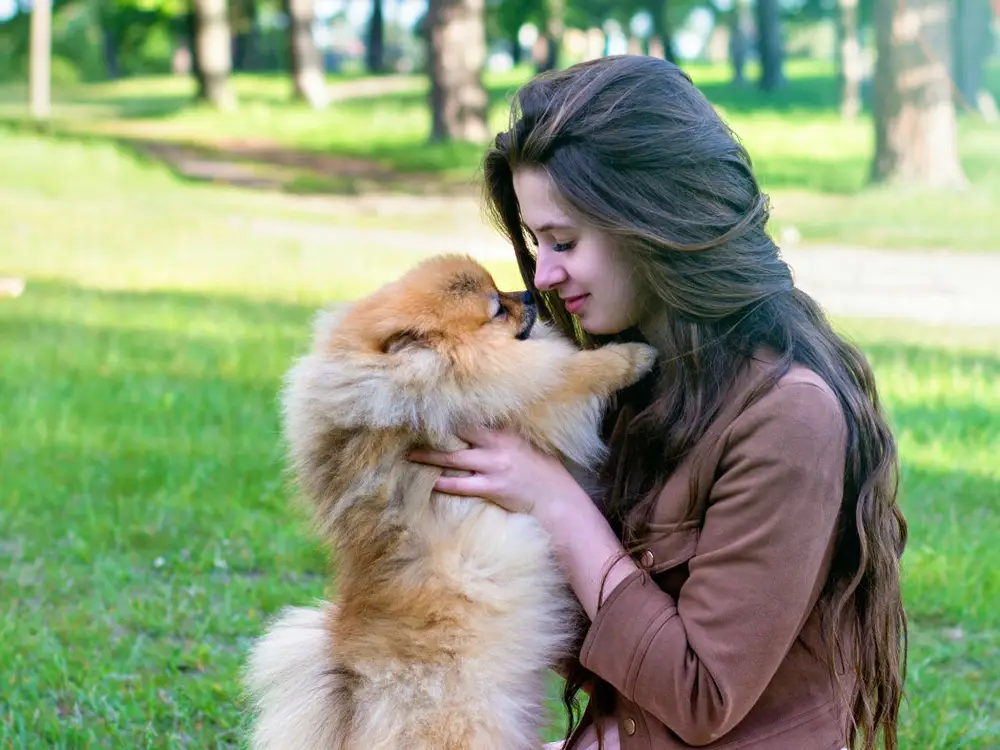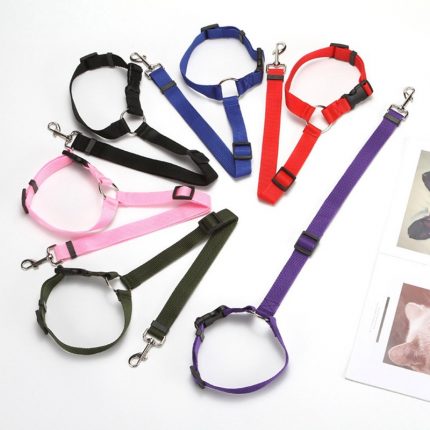It’s a common experience for dog owners – when we’re feeling down, our furry companions often come to our side, offering comfort and support. But have you ever wondered Why Does My Dog Come to Me When I Cry? This phenomenon has fascinated dog lovers and researchers alike, sparking numerous studies and theories to unravel the mystery behind this empathetic behavior.
Humans and dogs share a unique bond that has evolved over thousands of years. As social animals, dogs have developed remarkable emotional intelligence, allowing them to sense and respond to our feelings. Their ability to detect subtle changes in our body language, facial expressions, and even chemical signals has been honed through years of coexistence and selective breeding. This heightened sensitivity enables them to pick up on our distress and respond in ways that provide comfort and reassurance.
 The Emotional Connection Between Dogs and Humans
The Emotional Connection Between Dogs and Humans
When we cry, our dogs often rush to our side, offering a comforting presence that seems to understand our pain. This behavior can be attributed to several factors of Why Does My Dog Come to Me When I Cry, highlighting the unique emotional connection between dogs and humans.
1. Sensitivity to Emotional Cues
Dogs have an incredible ability to pick up on our emotional cues, even the subtlest ones. They are keen observers of our body language, facial expressions, and vocalizations, allowing them to gauge our emotional state. When we cry, our dogs can sense the distress in our posture, the sadness in our eyes, and the changes in our voice.
Research has shown that dogs are highly attuned to human emotions, often mirroring our feelings. They can differentiate between different emotional states, such as happiness, anger, and sadness. This sensitivity enables them to recognize when we are in distress and respond with empathy and support.
2. Pack Mentality
Dogs are pack animals by nature, and as our beloved pets, they consider us part of their pack. In a social group, members rely on each other for support and protection. When a pack member shows signs of distress, other members instinctively come to their aid.
When we cry, our dogs may interpret it as a distress signal, triggering their pack mentality. They feel compelled to provide comfort and companionship, just as they would for another member of their pack. This behavior is deeply ingrained in their evolutionary history and reinforces the bond between dogs and humans.
3. Empathy and Compassion
Studies have revealed that dogs possess a remarkable capacity for empathy, being able to understand and share the emotions of their human companions. When we cry, our dogs may pick up on our sadness, pain, or vulnerability, prompting them to respond with compassion.
They may approach us gently, nuzzle or lick our faces, or simply stay close by our side. These actions provide a sense of comfort and reassurance, reminding us that we are not alone in our emotional turmoil. Dogs have an innate ability to offer unconditional love and support, even during our darkest moments.
4. Sensitivity to Vocal Cues
In addition to their keen observation of our body language, dogs also have a heightened sensitivity to our voices and the sounds we make. Crying often involves vocalizations that differ from our usual speech patterns. Dogs can detect subtle variations in pitch, tone, and intensity, allowing them to distinguish crying from other vocal expressions.
When we cry, our voices may carry a distinct emotional quality that captures their attention. This prompts their instinctual response to investigate and offer comfort. They may respond with gentle whimpers, soft barks, or even attempts to mimic our vocalizations, creating a sense of emotional connection.
Practical Recommendations for Why Does My Dog Come to Me When I Cry
Here are some of the recommendations of Why Does My Dog Come to Me When I Cry:
1. Recognize and Acknowledge Your Dog’s Emotional Sensitivity
Understanding that dogs are highly sensitive to our emotions is crucial for strengthening the bond with your furry friend. Take the time to observe and acknowledge their reactions to your emotional state. Be mindful of your body language, facial expressions, and vocal cues, as your dog will pick up on these subtle signals. By recognizing their emotional sensitivity, you can better respond to their needs and provide a supportive environment.
2. Create a Safe Space for Emotional Expression
Just as dogs provide comfort to us during times of distress, it’s essential to create a safe space for them to express their emotions as well. Encourage emotional expression through play, exercise, and positive reinforcement. Allow your dog to have moments of vulnerability and provide reassurance and comfort when they need it. By fostering an environment that accepts and supports emotional expression, you’ll strengthen the bond and trust between you and your dog.
3. Practice Active Listening and Communication
Effective communication is vital in any relationship, including the one with your dog. Practice active listening by paying attention to your dog’s cues and body language. Observe their behavior and respond accordingly. When your dog approaches you during moments of distress, listen to their needs and provide the comfort they seek. Engage in positive verbal and non-verbal communication to reinforce the emotional connection and build trust.
4. Provide Consistency and Routine
Dogs thrive on routine and predictability. Establish consistent daily routines for feeding, exercise, and playtime. Consistency helps create a sense of security and stability for your dog, allowing them to feel more at ease and connected to you. By providing a structured and predictable environment, you’ll strengthen the bond and reinforce the trust between you and your furry companion.
5. Seek Professional Guidance if Needed
If you’re facing challenges in understanding or nurturing the bond with your dog, don’t hesitate to seek professional guidance. Dog trainers, behaviorists, or veterinarians can provide valuable insights and techniques to help strengthen the emotional connection with your dog. They can offer tailored advice based on your specific situation and address any concerns or issues you may have.
6. Practice Patience, Love, and Understanding
Building a strong bond with your dog takes time, patience, and a lot of love. Understand that each dog is unique and may respond differently to emotional cues. Be patient with their progress and setbacks, and always approach them with kindness and understanding. Remember that the bond between you and your dog is a lifelong journey, and nurturing it requires ongoing commitment and care.
 Why Does My Dog Come to Me When I Cry – Conclusions
Why Does My Dog Come to Me When I Cry – Conclusions
The question of why dogs come to us when we cry encompasses various elements of their behavior and the unique bond they share with humans. It is a combination of their sensitivity to emotional cues, their pack mentality, their capacity for empathy, and their acute sensitivity to vocal cues.
Our featured products:
Why Does My Dog Come to Me When I Cry, our dogs demonstrate their unwavering support and understanding. They provide comfort, companionship, and an empathetic presence that can help alleviate our emotional pain. Their actions remind us of the extraordinary emotional intelligence they possess and deepen the bond between humans and dogs.















 The Emotional Connection Between Dogs and Humans
The Emotional Connection Between Dogs and Humans Why Does My Dog Come to Me When I Cry – Conclusions
Why Does My Dog Come to Me When I Cry – Conclusions